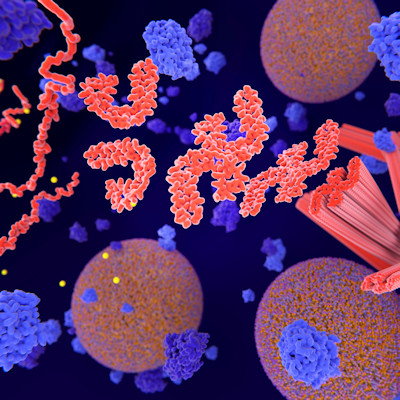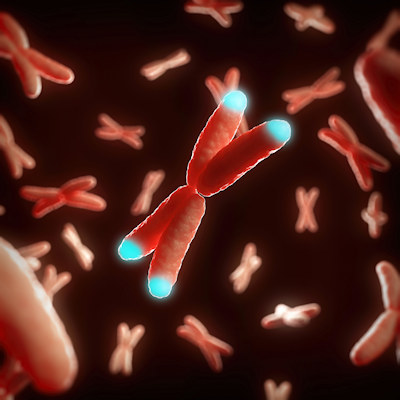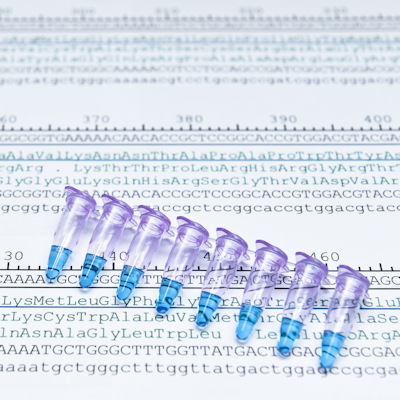March 30, 2021 -- A new gene editing tool called prime editing was demonstrated to efficiently create cell-specific knockout mice compared to traditional gene editing techniques. While both platforms successfully created mutations, prime editing did so without measurable on-target indels or off-targeting events, according to a study published in Genome Biology on March 16.
Transcription factor binding sites (TFBS) are regions in the promoter and enhancer regions of target genes (noncoding regions). Transcription factors modulate gene expression by binding to these regions. Understanding the biology of TFBS in orchestrating gene transcription may provide insight into the basic mechanisms of disease.
A history of achieving engineered editing
The first generation of CRISPR editing utilizes three components:
- An endonuclease (Cas9)
- A single-guide RNA (sgRNA) that shepherds Cas9 to the sequence to be edited
- A repair template, generally a single-strand oligodeoxynucleotide (ssODN) engineered to carry small insertions, deletions, or substitutions that are incorporated into the target DNA sequence during homology-directed repair (HDR) of the sgRNA-Cas9 induced double-strand break
The three-unit CRISPR system has been shown to successfully disrupt TFBS in mice, thereby providing a model of in vivo targeted gene expression control. However, this type of editing is often inefficient and is associated with unwanted collateral indel mutations (short insertions or deletions), yielding off-targeting events.
Subsequently, a second-generation CRISPR platform, called base editing, was developed. In this system, an sgRNA directs a Cas9 nickase (mutated version of the nuclease domains of the Cas9 nuclease) fused to a cytidine or adenine deaminase to target DNA for installation of base substitutions without the generation of a double-strand break in DNA or the need for a repair template.
Base editing offers a greatly simplified delivery mechanism that can reduce the amount of indels. It can also be used to edit separable TFBS in mice with no detectable off-target events. However, researchers have noticed that the system generates so-called bystander substitutions in neighboring bases within the editing window, causing complications in the identification of correctly edited TFBS.
Introduction of prime editing
Now, a new two-component genome editing platform, called prime editing, uses a Cas9 nickase fused to an engineered Maloney murine leukemia virus reverse transcriptase that can directly copy desired edits to the target DNA sequence from a prime editing guide RNA (pegRNA). This system has the potential to provide versatile, precision-guided editing to correct all single-nucleotide variations (SNVs) of clinical importance in an organism.
"It's actually less complicated and more precise than traditional CRISPR," said Joseph Miano, PhD, molecular biologist at the Medical College of Georgia Vascular Biology Center, in a statement.
An example of an SNV of clinical relevance, the CArG box, is a TFBS for serum response factor (SRF), a widely expressed TF that directs a variety of gene expression programs. An SRF-binding CArG box is located 539 base pairs upstream of the major transcription start site of the human Tspan2 locus. Tspan2 encodes for a membrane-associated protein highly enriched in vascular and visceral smooth muscle cell-containing tissues and is conserved in many mammals, including mice.
HDR versus prime editing
In the current paper, researchers from the Medical College of Georgia sought to test the efficiency of prime editing versus three-component HDR editing in mice using the same protospacer targeting a TFBS (CArG box) located in the Tspan2 promoter.
The team designed a three-component CRISPR system with Cas9 protein, sgRNA, and ssODN with three nucleotide substitutions expected to disrupt SRF binding to the CArG box which was injected into mice. They found that Tspan2 mRNA expression was sharply attenuated in the smooth muscle-rich tissues of the aorta and bladder in mice that had the mutation. Using immunofluorescence microscopy of a smooth muscle cell marker (LMOD1) combined with RNA fluorescence in situ hybridization, they confirmed loss of Tspan2 mRNA in smooth muscle cells of the aorta and coronary arteries of the heart.
For prime editing, the scientists used the same CArG box of the Tspan2 promoter. They selected the prime editing 2 (PE2) plasmid because it showed a low level of indels in cultured cells. They generated a synthetic pegRNA with the same 20 nucleotide protospacer sequence used for the HDR experiment and a scaffold with 10 nucleotides corresponding to the reverse transcriptase template and a 16-nucleotide primer binding site. The system was designed to create a single-base substitution (cytosine to guanine) at position 8 of the reverse transcriptase template. The in vitro-transcribed PE2 mRNA and pegRNA were then injected into mice.
Similar to the HDR experiment, expression of Tspan2 mRNA was virtually eliminated in the aorta and bladder of adult mice with little change in brain and heart. RNA fluorescence in situ hybridization of mice with pegRNA confirmed the loss of Tspan2 mRNA in smooth muscle cells of blood vessels in brain and heart.
"We were trying to model what could happen with a single nucleotide change," Miano explained. "We asked the question if we incorporate a single-base substitution, if we just make one base change, what happens to Tspan2 expression? The answer is it did the same thing as the traditional CRISPR editing: It killed the gene's expression."
More precision
Next, the team evaluated the editing platforms for their ability to install engineered nucleotide substitutions with minimal on-target indels or off-targeting events. Targeting sequencing analysis found that while HDR showed a higher frequency of on-target editing, it also produced a higher number of undesirable indels. In contrast, none of the prime editing produced indels at the on-target editing site.
Lastly, the researchers used an unbiased genome-wide method, the recently described circularization for high-throughput analysis of nuclease genome-wide effects by sequencing (CHANGE-seq) to assess off-target mutations of both platforms. Off-target mutations were observed at relatively high frequencies in HDR mice (5/11), whereas there were no detectable off-target mutations in prime editing mice. The authors noted that this may be due to reasons related to the different structures of the sgRNA and pegRNA.
"The bottom line is that unintended consequences are much less and it's actually less complicated to use," Miano concluded of the proof-of-concept work.
The authors noted that there is a lack of causality of such regulatory mutations in disease, especially in animal models. Their research brings the possibility of cell-restricted knockout mice without the labor-intensive mouse genetic programs one step closer to becoming a reality.
The scientists hope more of their colleagues will start using prime editing to build experience and accelerate movement toward its use in humans. Their long-term goals include using safe, specific gene editing to correct genetic abnormalities during human development that are known to result in devastating malformations and disease like heart defects.
Do you have a unique perspective on your research related to synthetic biology or genomics? Contact the editor today to learn more.
Copyright © 2021 scienceboard.net










